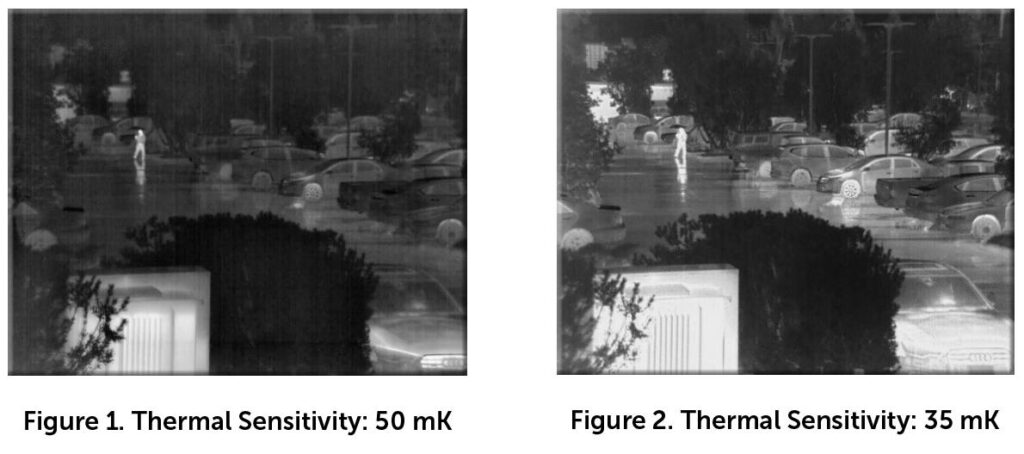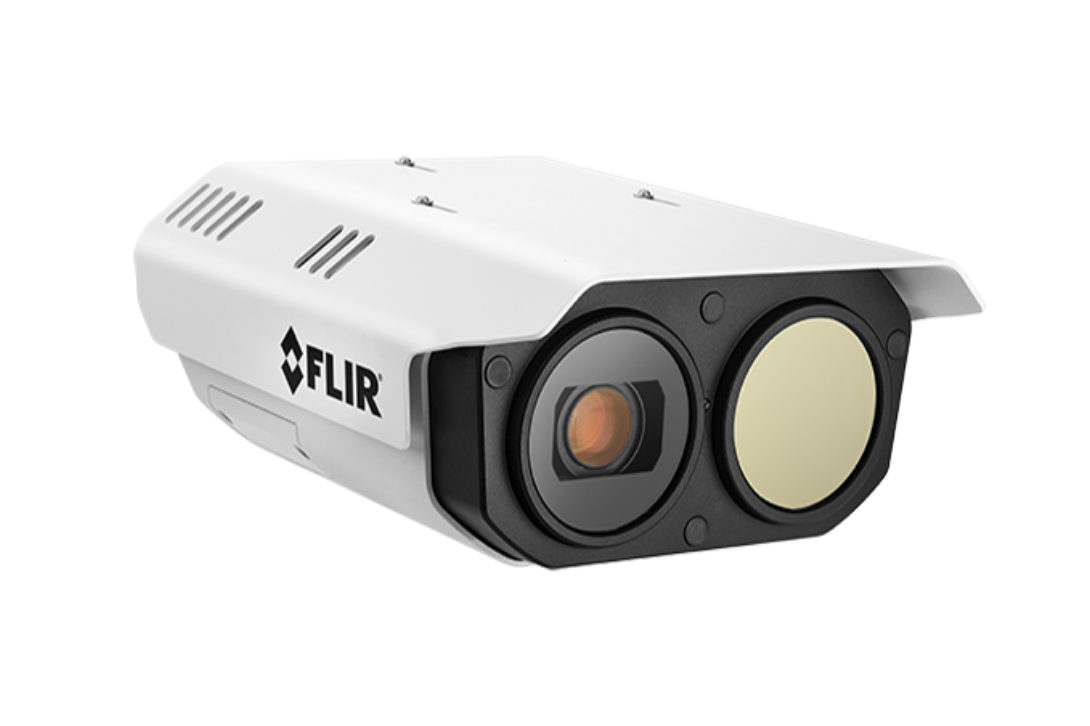
As security risks continue to grow, it is crucial not only to detect intruders but also to accurately identify them and minimize false alarms. That is why modern security technologies, such as Teledyne FLIR thermal cameras, focus on maximizing sensor sensitivity. A key parameter in this regard is NETD (Noise Equivalent Temperature Difference) – the thermal sensitivity of a camera, which directly impacts image quality and detection accuracy. But what exactly does it mean, and why is it so important?

NETD is a unit that expresses the smallest temperature difference a thermal camera can detect. It is measured in milli Kelvin (mK), and the lower the value, the higher the camera’s sensitivity.
Imagine two individuals standing side by side—one wearing a light jacket, the other in a thick winter coat. A high-sensitivity thermal camera (with a low NETD value) can detect even minor temperature differences, producing sharp and detailed images even in complete darkness or fog. Conversely, a camera with a higher NETD captures fewer details, resulting in a blurry image where distinguishing objects becomes more difficult.
Thermal camera sensitivity varies depending on the model and its intended use. Below is a general guide on how different NETD values affect performance:
For professional security applications, NETD <25 mK is the most recommended as it ensures clear imaging even under the most challenging conditions.

Low thermal sensitivity brings several critical benefits, making security surveillance more reliable:
For example, the FLIR FH-Series with NETD <25 mK is among the best solutions for perimeter protection in environments where high detection accuracy is required.

While a thermal camera alone is a powerful tool, its capabilities are significantly enhanced when paired with radar technology. The combination of thermal imaging and radar detection allows for not just spotting intrusions but also automatic tracking and precise visual verification of targets.
One of the most effective solutions is the FLIR Elara R-190 radar, which integrates thermal imaging with radar-based detection. This system provides:
This combination maximizes detection accuracy while minimizing false alarms, making it ideal for securing industrial sites, airports, military bases, and critical infrastructure.
If you aim to secure your facility with maximum reliability, NETD should be a key consideration when choosing thermal imaging technology. At SCANLOCK, we provide cutting-edge Teledyne FLIR security solutions that guarantee accurate detection, high durability, and advanced analytics. Whether you need protection for an industrial facility, energy infrastructure, or a sensitive military site, we help you find the perfect tailored solution.
Want to Learn More? Contact us for a custom security solution designed specifically for your needs.